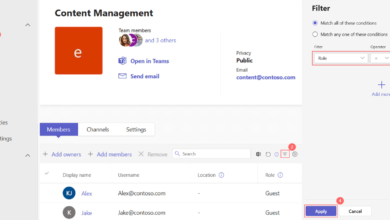Enhancing Video Content with AI: Tips and Tricks for Advanced Editing

The integration of Artificial Intelligence (AI) in video editing has revolutionized the way content creators approach video production, offering powerful tools that can improve efficiency, creativity, and the overall quality of video content. As video continues to dominate digital platforms, the ability to quickly and effectively edit footage using AI is becoming increasingly crucial. This comprehensive guide will explore advanced tips and tricks for enhancing video content with AI, aimed at helping intermediate and advanced editors maximize their use of AI video editing tools.
Understanding AI in Video Editing
AI video editing involves the use of machine learning and algorithms to automate complex editing tasks that would typically require extensive human effort. These AI systems are trained on vast datasets to understand video and audio patterns, enabling them to execute tasks like color correction, sound mixing, object recognition, and even content analysis with minimal human input.
Selecting the Right AI Video Editing Software
Before diving into specific editing techniques, it’s important to choose an ai video generator tool that suits your needs. Software like InvideoAI, Adobe Premiere Pro, Final Cut Pro X, and DaVinci Resolve incorporate AI features that cater to different levels of expertise and editing needs. Consider factors such as the types of projects you handle, your preferred workflow, and the specific AI functionalities that will enhance your productivity and creativity.
Tips and Tricks for Advanced AI Video Editing
1. Leveraging AI for Efficient Workflow
- Automated Rough Cuts: Use AI to automatically assemble rough cuts. This can be especially useful in documentary filmmaking or any project with extensive raw footage. AI can analyze the footage for speech or action and assemble a preliminary edit that you can refine.
- Scene Recognition: Utilize AI tools that recognize different scenes and automatically tag them based on content. This can dramatically speed up the process of finding and organizing clips during the editing process.
2. Enhancing Visual Quality
- Color Correction: AI-driven color correction can provide a consistent look across all clips in a project by matching color tones and styles automatically. This not only speeds up the post-production process but also ensures a professional appearance.
- Up-Scaling Resolution: AI can be used to upscale videos to higher resolutions without noticeable loss of quality. This is particularly useful for repurposing older content for modern high-resolution platforms.
3. Sophisticated Audio Editing
- Automatic Audio Sync: Use AI to sync audio tracks from different sources automatically. This is invaluable for projects that involve multi-camera shoots or separate audio recordings.
- Noise Reduction: Apply AI tools to detect and eliminate background noise or to isolate particular sounds, enhancing the overall audio clarity of your videos.
4. Creative Editing
- Object and Facial Recognition: Implement AI features that track objects or faces throughout clips, allowing for dynamic text overlays or focused effects. This feature is great for tutorials, sports videos, and feature films.
- Motion Tracking: Engage AI to track motion within the video, which can be used to add complex animations or text that follows a moving object seamlessly.
5. Content Optimization for Different Platforms
- Aspect Ratio and Formatting: Automatically adjust the aspect ratio of videos to suit different platforms (e.g., square for Instagram, vertical for TikTok, and widescreen for YouTube) using AI. This ensures optimal viewing experiences across all channels.
- Thumbnail Generation: Let AI analyze your video and generate eye-catching thumbnails that are likely to draw more views, based on engagement metrics from similar content.
Advanced Techniques in AI Video Editing
Custom AI Tools
For those who have specific needs that off-the-shelf tools cannot meet, consider developing custom AI models. Platforms like TensorFlow or PyTorch allow more tech-savvy editors to train models that cater specifically to their unique editing style or requirements.
AI-driven Storytelling
Utilize AI to analyze viewer behavior and engagement to tailor the storytelling elements of your videos. AI can suggest which parts of your video are more engaging and should be highlighted or which parts may need shortening to maintain viewer interest.
Ethical Considerations and Challenges
While AI significantly enhances video editing, it also brings challenges and ethical considerations. Dependence on AI can potentially stifle creativity if not balanced with human input. There is also the ongoing debate around deepfakes and the ethical use of AI in manipulating video content, which requires vigilance and responsibility.
Conclusion
AI video editing is transforming the landscape of video production, offering tools that simplify and enhance the editing process. By understanding and utilizing the advanced features of AI, video editors can not only improve the efficiency of their workflows but also achieve a higher level of creativity and personalization in their projects. As technology continues to evolve, staying informed and adaptable will be key to leveraging AI effectively and ethically in video editing.



